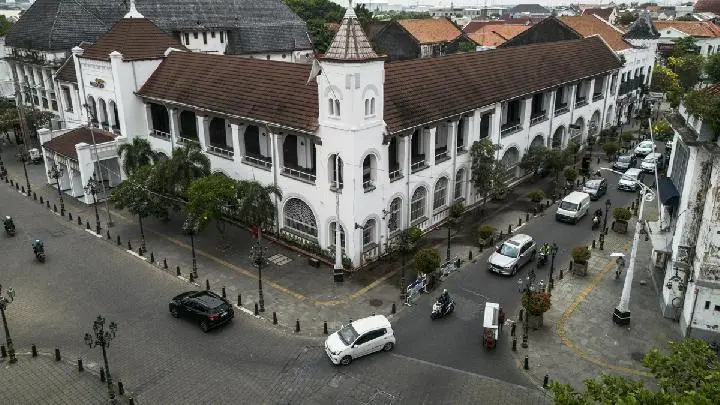
TEMPO.CO, Jakarta - On 20 September 2025, former Indonesian Finance Minister Sri Mulyani chose Semarang Old Town in Central Java as the destination for her weekend getaway. She shared her moments on Instagram and reminisced about her experience exploring the area.
The historical district was filled with visitors enjoying the warm atmosphere, local culinary delights, and traditional Semarang music, Gambang Semarang. Sri Mulyani also took a trip down memory lane, recalling Tawang Station, which she often used for traveling, and the simple experience of riding a pedicab along Jalan Pemuda to Kalisari.
Semarang Old Town is located in Tanjung Mas Village, North Semarang District. According to the official website of the Semarang City Government, this area has become a historical tourist destination. The distinctive European architecture has earned it the nickname Little Netherlands.
The History of Semarang Old Town
Semarang Old Town originated from the treaty signed between the Mataram Sultanate and the Dutch East India Company (VOC) on 15 January 1678. At that time, Sultan Amangkurat II handed over Semarang to the VOC as a form of payment for their assistance in suppressing the Trunojoyo rebellion. The city began to develop under VOC control, including the construction of a fortress called Vijfhoef. This fortress served as a military center and a Dutch civilian settlement. Over time, the area outside the fortress, particularly the eastern part, began to flourish with the arrival of residential homes, offices, and government buildings.
From 1740 to 1743, the Geger Pecinan incident, a major resistance against the VOC's rule in Java, occurred. After the resistance ended, a system of fortifications was built around Semarang Old Town. However, as it no longer suited the rapid urban development, the defensive fortress was dismantled in 1824. To commemorate its existence, several streets in the Old Town were named according to the location of the city walls, such as Noorderwalstraat (North Wall Street, now Jalan Merak), Oosterwalstraat (East Wall Street, now Jalan Cendrawasih), Zuiderwalstraat (South Wall Street, now Jalan Kepodang), and Westerwalstraat (West Wall Street, now Jalan Mpu Tantular).
Colonial Buildings
Many colonial-era buildings in Semarang Old Town are still standing and have been repurposed. Among them are the former De Javasche Bank building, now known as Semarang Creative Gallery, the former Dutch Government Court building, which became the residence of the Immanuel Church pastor, and later a restaurant. There is also the Marba Building, the H. Spiegel Building, which now serves as a bar and bistro, and the Van Drop Building, which has been transformed into the Dream Museum Zone.
Other colonial buildings include the Marabunta Building, formerly known as the Staatschouwburg theater. It has since been repurposed as a multipurpose building. Other historic buildings include the State Finance Building (Papak), which was once the City Hall, Bank Mandiri KC Mpu Tantular, previously Societiet De Harmonie, and the area's main icon, Blenduk Church, an 18th-century church that is still used as a place of worship. Not to mention, the Berok Bridge (Gouvernementsbrug), built in the 17th century, remains standing as a historical witness to the long journey of Semarang Old Town.
Kinar Laimaura contributed to this article
